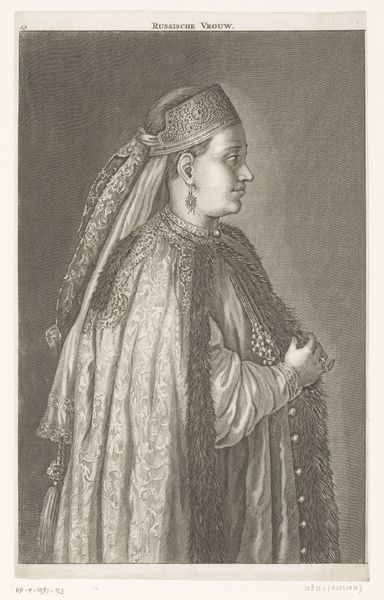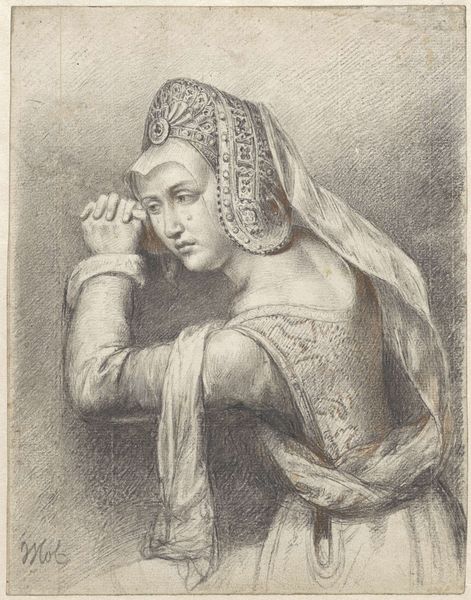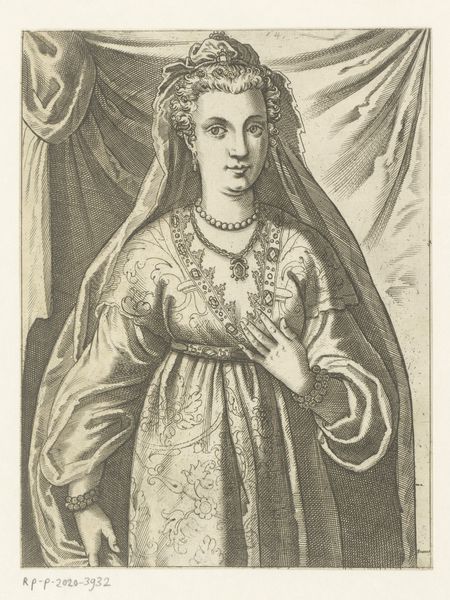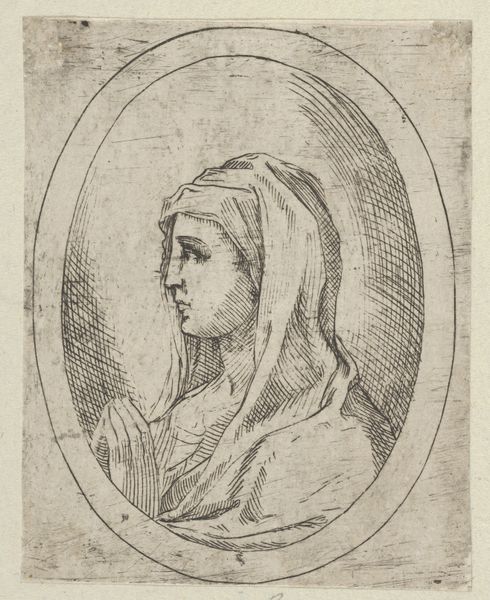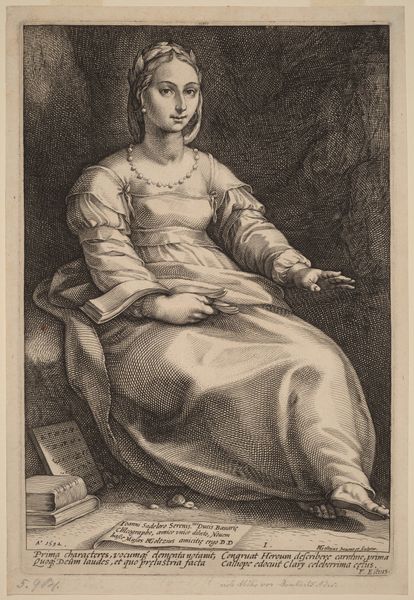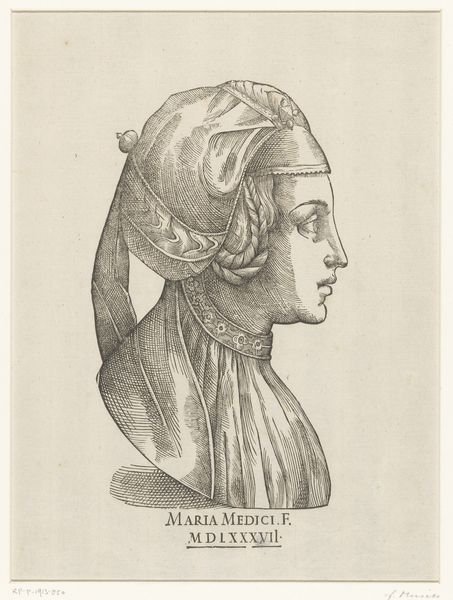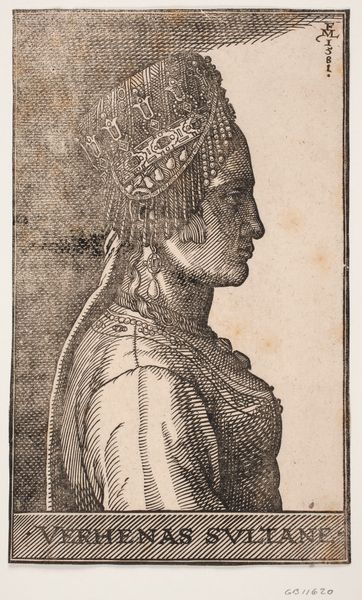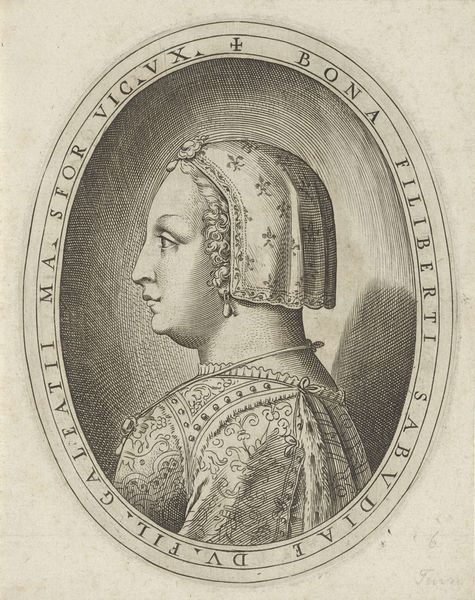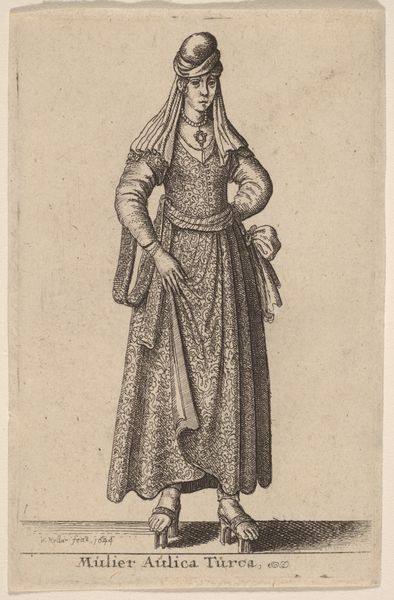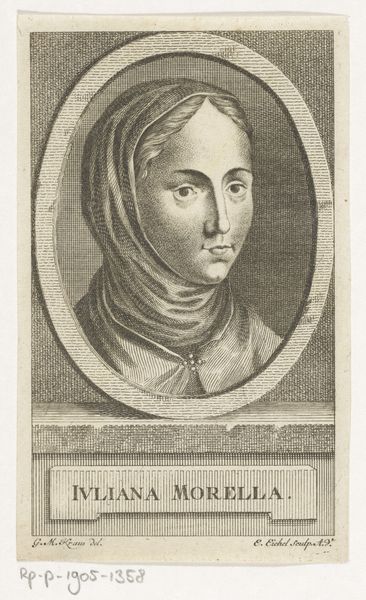
print, engraving
#
portrait
# print
#
caricature
#
figuration
#
11_renaissance
#
line
#
history-painting
#
northern-renaissance
#
engraving
Dimensions: height 239 mm, width 145 mm
Copyright: Rijks Museum: Open Domain
Editor: We're looking at "Zelome Sultane," a print created by Melchior Lorck in 1581. I'm immediately drawn to the intense gaze of the subject. What stands out to you about this portrait from a formal perspective? Curator: The emphasis is manifestly on line and its capacity to delineate form and texture. The very dense, parallel hatching creates a complex interplay of light and shadow, most evident in the rendering of the face and costume. Do you notice how Lorck uses this technique to suggest the luxurious materials of the Sultan’s attire? Editor: I see what you mean. The intricate detail on her clothing, created purely with lines, is quite impressive. And the stark contrast between the subject and the plain background definitely pushes her forward. Can the consistent directionality of the lines serve to enhance the volumetric quality, offering both definition and a distinct surface texture? Curator: Precisely. Note also the construction of the face itself. The brow line and nose, sharply defined, contrasted to the subtle modulation of the cheek. Lorck has employed the tools of graphic expression with impressive skill. Observe as well, how he's chosen to use a different pattern of lines for the border of the image as well. Editor: The almost uniform and parallel lines create a unique texture on the clothing and the face, while also making me question the caricature of her look. The print technique itself—the lines—contributes significantly to this almost stark aesthetic, wouldn't you say? Curator: Absolutely. The use of engraving allows for that incredibly precise line work. Furthermore, by understanding Lorck's construction with hatching and contour lines, it leads the viewer toward the surface, enhancing the subject's power through formal methods. Editor: So by looking closely at the techniques and the use of lines, we discover more details and textures of the piece that contribute to our understanding? Curator: Indeed. The close examination of formal elements enables us to appreciate the artistic decisions behind this particular work.
Comments
No comments
Be the first to comment and join the conversation on the ultimate creative platform.

